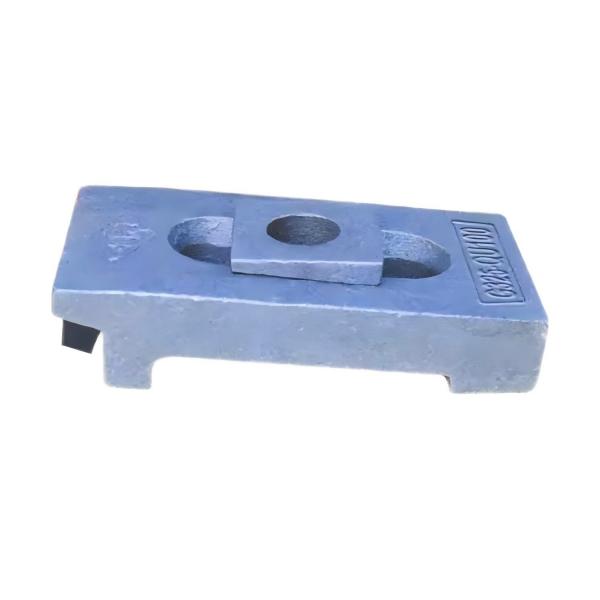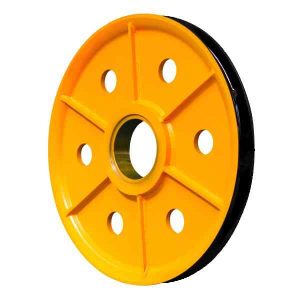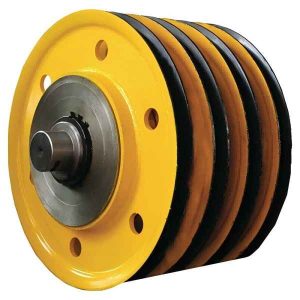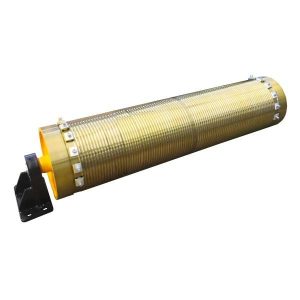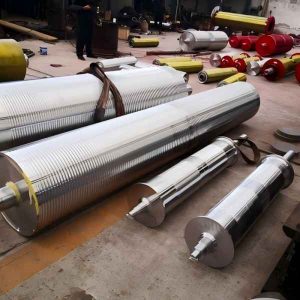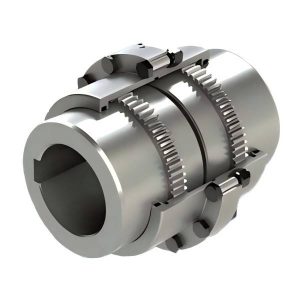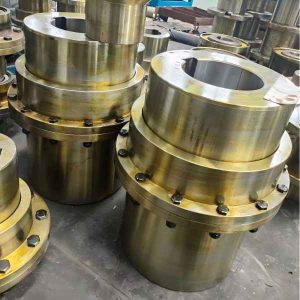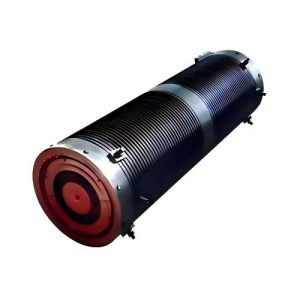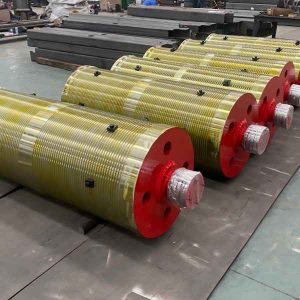HDGY Rail Clip
Specifications of HDGY Rail Clip
- Models: HDGY24, HDGY38A, HDGY38B, HDGY43, HDGY50, HDGY70, HDGY80, HDGY100, HDGY120
- Fixing Method: Bolt fixing
Features of HDGY Rail Clip
Elastic Fixation and Reduced Wear
The HDGY rail clip is specifically designed to provide elastic fixation of rails to concrete crane beams. This design reduces rail head wear, minimizes the impact on the crane beam, decreases the wear on the crane wheel flange, and lowers noise levels. As a result, the system enhances both the longevity and efficiency of crane operations.
Enhanced Stability with Elastic Composite Rubber Pad
By including an elastic composite rubber pad between the rail and crane beam, the HDGY rail clip significantly increases friction, preventing rail movement. Additionally, this feature eliminates or minimizes uneven gaps along the rail length, leading to improved bolt stress distribution on the clamp plates, further enhancing the system’s overall stability.
Optimal Stress Distribution
The rubber pad is designed with a slightly convex cross-section to ensure rational stress distribution. Moreover, small rectangular ridges on the pad enhance its contact with the rail, increasing elasticity and providing effective vibration dampening, which ultimately contributes to smoother operation and reduced wear.
Durable Design
The rubber pad features rectangular grooves that minimize lateral deformation under stress and reduce surface damage from compression. Furthermore, with treated steel reinforcement, the structure of the HDGY rail clip is highly durable, maintaining excellent performance even after 2 million fatigue cycles, ensuring long-term reliability.
Secure and Symmetrical Clamp Plates
The clamp plates are securely fixed to the crane beam, making them resistant to loosening and minimizing crane beam wear. The symmetrical design of the clamp plates forms a wedge-shaped structure in the cross-section, effectively limiting lateral rail displacement, which ensures stability during crane operation.
Adjustability for Installation and Maintenance
To simplify installation and maintenance, elliptical slots in the clamp plate allow for lateral adjustments. Additionally, sloped holes paired with anti-slip blocks prevent clamp movement and facilitate lateral alignment during installation or maintenance, ensuring precise adjustments and ease of handling.
Tolerance for Rail Movement
The system is designed to accommodate slight rail movements during crane operation. This ensures flexibility without compromising stability, allowing for efficient movement while maintaining the integrity of the rail and crane system.
Installation Steps for HDGY Rail Clip
Positioning the Rubber Pad
First, place the rubber pad with its rectangular ridges and grooves aligned parallel to the rail and positioned underneath it. Ensure that the pad is perpendicular to the rail’s centerline and properly positioned relative to the bolts on both sides. This ensures precise placement and alignment for optimal performance.
Preparation of the Base Layer
Before placing the rubber pad onto the concrete base layer, thoroughly clean the surface to remove any debris. This step is essential to ensure that there is no contamination that could reduce the performance of the system.
Assembling the Clamp Plate
Follow these steps in the assembly process:
- Insert bolts into the pre-drilled holes in the reinforced concrete crane beam.
- Place the clamp plate body onto the base.
- Add the anti-slip block with the small end facing the rail to enhance stability.
- Attach the spring washer and nut, then pre-tighten the assembly.
- Adjust the clamp plate to ensure that it presses tightly against the rail edge.
- Finally, fully tighten the bolts to secure the components in place.
Alignment of the Clamp Plate
Ensure that the centerline of the clamp plate is perpendicular to the rail’s centerline without skewing. This step guarantees that the clamp plate is properly aligned for optimal rail fixation and overall system performance.


